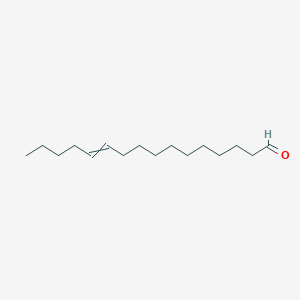| Authors | Title | Published | Journal | PubMed Link |
|---|---|---|---|---|
| pmid: | ||||
| Choi MY et al. | Pheromone biosynthetic pathways in the moths Heliothis subflexa and Heliothis virescens. | 2005 | Arch. Insect Biochem. Physiol. | pmid:15898118 |
| Blatter EE et al. | Chemical modification of aldehyde dehydrogenase by a vinyl ketone analogue of an insect pheromone. | 1990 | Biochem. J. | pmid:2268265 |
| Willis RM et al. | Characterization of a fatty acyl-CoA reductase from Marinobacter aquaeolei VT8: a bacterial enzyme catalyzing the reduction of fatty acyl-CoA to fatty alcohol. | 2011 | Biochemistry | pmid:22035211 |
| Mori K | New synthesis of (11Z,13Z)-11,13-hexadecadienal, the female sex pheromone of the navel orangeworm. | 2009 | Biosci. Biotechnol. Biochem. | pmid:19966474 |
| Baker TC | Nearest neural neighbors: moth sex pheromone receptors HR11 and HR13. | 2009 | Chem. Senses | pmid:19458025 |
| Zhao XC and Berg BG | Arrangement of output information from the 3 macroglomerular units in the heliothine moth Helicoverpa assulta: morphological and physiological features of male-specific projection neurons. | 2010 | Chem. Senses | pmid:20457569 |
| Lee SG et al. | Glomerular targets of Heliothis subflexa male olfactory receptor neurons housed within long trichoid sensilla. | 2006 | Chem. Senses | pmid:16984959 |
| Grosse-Wilde E et al. | Candidate pheromone receptors provide the basis for the response of distinct antennal neurons to pheromonal compounds. | 2007 | Eur. J. Neurosci. | pmid:17445234 |
| Pregitzer P et al. | Plant odorants interfere with detection of sex pheromone signals by male Heliothis virescens. | 2012 | Front Cell Neurosci | pmid:23060749 |
Hexadec-11-enal
Hexadec-11-enal is a lipid of Fatty Acyls (FA) class.
